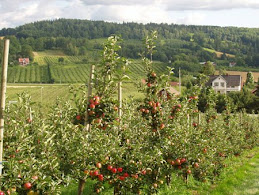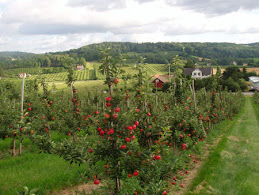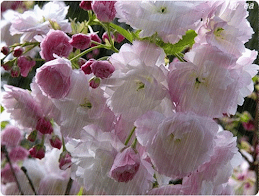By Nikki Jong, Caring.com contributing editor

https://blogger.googleusercontent.com/img/b/R29vZ2xl/AVvXsEjdAtsTNh4GJQHvKDJFbcw1tVcq3zMRZRVP6tWWkDdDgHCvq4p2Q-C03pCkpBsKvAM8_PK1W3RsfSVOH5WB7RDdLYQ06wvUN8JH_NVbxKsD8SnqgEsp74hZXrjA3l0WRMeO8TzWJSRiXvLh/s1600/1374565382.jpg
http://gistpage.com.ng/uploads/1374565382.jpg
http://gistpage.com.ng/mobile/ng/forum/1247/6-foods-that-lower-blood-pressure
There are two big risk factors for high blood pressure that are beyond your control: age and family genetics.
What can you control? Everything else, which involves making smart lifestyle choices, such as being physically active, reducing your sodium intake, and eating healthfully.
If you're already doing those things, you're on the right track. But you can still kick it up a notch by watching what you quaff (drink heartily): These six drinks can contribute to a drop in blood pressure, especially in combination with a healthy diet and regular exercise.
1. Low-fat milk
How it works: Calcium deficiencies have long been linked to high blood pressure, and the inverse is also true: High calcium intake helps lower high blood pressure. It's important to choose the right type of milk for the best results, though. Low-fat milk is richer in calcium than full-fat milk, and the modest amount of fat actually helps you absorb the calcium more easily. Win-win!

https://blogger.googleusercontent.com/img/b/R29vZ2xl/AVvXsEg7rgQ4b9e499GWYF34Zbxwb2P40kOWEF8ZoE4x4qE7VVJ819S1uNOC6N7vF8JqODax2parcP9aNi7PuA036HT3g8GZkbvEsfumeGIq8rzoUbqT4cuwxCViPZQ2JOYIhX-ctOvO49llD_vS/s1600/low-fat-milk.jpg
http://andifajar.com/wp-content/uploads/2012/09/low-fat-milk.jpg
http://andifajar.com/4-foods-that-should-be-eaten-before-bed.html
Sipping suggestion: As part of a daily regimen, three servings of low-fat milk and other low-fat dairy products has been shown to help reduce systolic blood pressure.
2. Beet juice
How it works: Beets are a good source of potassium -- and a good source of folate, both of which are important in regulating blood pressure. What's more, beets contain nitrate, which is converted into nitrites once ingested. Nitrites relax smooth muscle tissue and increase blood flow. Finally, beets support healthy blood vessel function and battle homocysteine, which can damage blood vessels.

Beet juice is best as all nitrates are preserved and they are converted in a human’s body into nitric oxide, which can lower blood pressure and enhance blood flow.
https://blogger.googleusercontent.com/img/b/R29vZ2xl/AVvXsEhLOU-UZZApyPX92TmJP9bQGSMvSVyVqUUZoXKg8D1UQK9NlxakPuVLVPxSFb5INd8S4KzImS-w24yawdPrEenONbfZ-uYKy9UiyNEnCiySu5DrJAJ1qyTQlOMbuIdoRGR7fBC1UpFVseXy/s1600/Fresh-Beet-Juice.jpg
http://healthlr.com/wp-content/uploads/2013/06/Fresh-Beet-Juice.jpg
http://healthlr.com/health-benefits-of-fresh-beet-juice.html
Sipping suggestion: Research suggests that one to two cups of beet juice daily can lower blood pressure immediately (within an hour of consumption) and significantly. An English study found beet juice to be as effective as nitrate tablets in treating hypertension.
3. Hibiscus tea
How it works: Like pomegranate juice, hibiscus contains bioactive phytochemicals that act as a natural ACE (an enzyme that raises blood pressure) inhibitor. One study showed that hibiscus tea was as effective at lowering blood pressure as captopril, a prescription ACE inhibitor used to treat high blood pressure and heart failure.
Rich in anthocyanin, glycoside hibiscin and gossypetin, which have diuretic and choleretic effects, the tea helps control blood viscosity, reduce blood pressure and enhance digestion.
Studies have also shown that hibiscus tea helps lower blood pressure. According to one study, people who frequently drink hibiscus tea, experience a reduction of 7.2 points in their systolic blood pressure. Hibiscus tea is also a mild diuretic, which increases urination and reduces blood volume, causing blood pressure to go down.
https://blogger.googleusercontent.com/img/b/R29vZ2xl/AVvXsEgINmwWwS-_PSegdKODXDk_P0ENmV8so4yb8sLfHAHV5S9HdQPz12haQ-aHmw5BZUg28Zkfcwvro-jbTsXFt3_2rDciXM50n-WvWXMx8ajLHHH5rf8E0rx4WXpCPeCwWVFDKtvi8U5b7r26/s1600/hibiscus_tea_full_1333046339.jpg
http://www.veria.com/media_publish/534/hibiscus_tea_full_1333046339.jpg
http://www.veria.com/herbs-supplements/hibiscus-tea-health-enhancer-and-natural-fat-flush6
Hibiscus tea is the infusion made from crimson or deep magenta-coloured calyces (sepals) of the Hibiscus sabdariffa flower, an herbal tea drink consumed both hot and cold by people around the world.
It is also referred to as:
- Roselle (another common name for the hibiscus flower) or rosella (Australian)
- Flor de Jamaica in Latin America
- Karkadé in Jordan, Egypt and Sudan
- Chai Kujarat in Iraq
- Chai Torsh in Iran
- Gumamela in the Philippines
- Bissap Or Wonjo in West Africa
- Sorrel in Jamaica, Trinidad and Tobago
- Red Sorrel in the wider Caribbean, and other names in other regions
Hibiscus tea has a tart, cranberry-like flavor, and sugar is often added to sweeten the beverage. The tea contains vitamin C and minerals and is used traditionally as a mild medicine.
Hibiscus tea contains 15-30% organic acids, including citric acid, maleic acid, and tartaric acid. It also contains acidic polysaccharidesand flavonoid glycosides, such as cyanidin and delphinidin, that give it its characteristic deep red colour.
https://blogger.googleusercontent.com/img/b/R29vZ2xl/AVvXsEhXs-202lFRVY0H0c8b4rmBmPBhTr7T3QL5r1dM5bhYTgrcLvMPK6A0G3v2icMPZoJTh15Gq2YkvpZ7tX1J3Wv1V_32UL_jUzu43iZKuGP8Kd0HW35sd5h3-lbkqS0rdP98le-TVzq9Htsg/s1600/clip_image002%5B3%5D+161247CE.jpg
https://blogger.googleusercontent.com/img/b/R29vZ2xl/AVvXsEiOqc8pXdx9b6uPeO42XhX6y7ybrFx0mAg_oMqKYxQcQs-wNWG2qJ-CdQGGawrLOlpUh8gTYyqZ9oH3KuEjYU5JJ0XgtdS4eAPvvpwiQwA1PZbXLgy3VnkcpcsZR0pJNQ7_Z9S8RmNXpDU/s1600/clip_image002%255B3%255D+161247CE.jpg
http://hibiscusteacup.blogspot.sg/2012_08_01_archive.html
Sipping suggestion: In one widely publicized study, three eight-ounce servings of hibiscus tea lowered prehypertensive subjects' systolic blood pressure significantly. Aim for three cups a day -- and for the best results, prepare fresh tea daily.
4. Pomegranate juice
How it works: ACE is an enzyme that raises blood pressure by creating a protein called angiotensin II, which causes your blood vessels to constrict. Pomegranate juice acts as a natural ACE inhibitor, similar to the class of medications prescribed to treat hypertension and heart failure. In one case, pomegranate juice reduced ACE by 36 percent and lowered systolic blood pressure, too. It's also been linked in a handful of recent studies to significantly reduced (up to 30 percent) arterial plaque and increased blood flow to the heart.
https://blogger.googleusercontent.com/img/b/R29vZ2xl/AVvXsEiJfmxjcOI1MXlC8QMDzI81RM489D3z_z5DMqfW716vZNVl8OClxUBiXJIRjNtdwxdeSezaJZqKZ1Q9VgAA0xsJmTLR4I_VCpV7T_fjR3q1QibE3lvy2Rsxnfd1VNwXAjKB4zwhdTGnAKOV/s1600/44999_567065380012525_1624791060_n.jpg
https://sphotos-b.xx.fbcdn.net/hphotos-ash3/p480x480/44999_567065380012525_1624791060_n.jpg
https://www.facebook.com/beautydeal.sg?filter=3
Sipping suggestion: Nutrition guru Jonny Bowden recommends drinking six ounces of unsweetened pomegranate juice every day. Too tart? Have two three-ounce servings cut with water or sparkling mineral water.
5. Cranberry juice
How it works: Cranberries and cranberry juice have powerful anti-inflammatory and antioxidant properties that help prevent and reduce damage inside the blood vessels, thereby preventing an undesirable increase in blood pressure. In addition, cranberry juice may help reduce blood pressure by dilating blood vessels and increasing blood flow. Finally, cranberries are an excellent source of blood-pressure-lowering vitamin C.
Cranberries and cranberry juice have powerful anti-inflammatory and antioxidant properties that help prevent and reduce damage inside the blood vessels, thereby preventing an undesirable increase in blood pressure.
Cranberry also holds special compounds that attack and inhibit bacteria's ability to form plaque. The fruit’s compounds disrupt certain enzymes within the bacteria that control its production of glucans, the building blocks of plaque formation.
https://blogger.googleusercontent.com/img/b/R29vZ2xl/AVvXsEhMP8ctJ0DqEGvjzASRMxYGph0-6FQIjlu-W33jtrCcSsHk-NM0lKZDAtkKTXX0cu0h8VSGne6X2rtfTOuY08qqqmEXjPj2uxQ4AqNi_eGGBpHY-ISChwnvOFW7CfDkL5-xdy6pLJMe16Q0/s1600/cranberry-juice-and-sauce.jpg
http://centerfordentalimplants.info/wp-content/uploads/2012/11/cranberry-juice-and-sauce.jpg
http://centerfordentalimplants.info/2012/11/miami-do-you-like-cranberries-your-teeth-probably-do/
Sipping suggestion: There's no standard recommendation for the amount of cranberry juice to drink as part of a daily regimen, but be sure to go for the unsweetened variety that's 100-percent cranberry juice. At 60 calories per one-cup serving, you can have two servings and still get fewer calories than you'd get with the sweetened stuff, which averages about 130 calories per cup.
6. Water
How it works: Drinking adequate amounts of water is, quite simply, one of the healthiest, cheapest, and most effective ways that you can help lower your blood pressure. Chronic dehydration causes blood vessels to constrict, which helps the body conserve water by reducing water loss through perspiration, urination, and respiration. Unfortunately, constricted blood vessels require your heart to work harder, resulting in a spike in blood pressure.
Correct timing to take water, will maximize its effectiveness to Human body.
Posted by Yes I Know That, Shared publicly - Jan 8, 2013
Two (02) glasses of water - After waking up - Helps activate internal organs
One (01) glass of water - 30 minutes before meal - Help digestion
One (01) glass of water - Before taking a bath - Helps lower blood pressure
One (01) glass of water - Before sleep - To avoid stroke or heart attack
https://blogger.googleusercontent.com/img/b/R29vZ2xl/AVvXsEjlb18NVFDMgERDw9L700re1GQDnvjR6yaIHrGloIH1aalEOArdoy1weN7O8NvULsNrva2O-Wn-g2DerGz5buaFK5L8jS8YL83kNGou1IShGGwL2Iaa5rGjr9j5ZCfB-kHLZDX4qvKrY4MP/s1600/yesiknowthat.jpg
https://lh5.googleusercontent.com/-l0dFRL6f-Ns/UOvjWbaoSdI/AAAAAAABtvg/46Ttr9RJB7M/w506-h530-o/yesiknowthat.jpg
https://plus.google.com/+YesIKnowThat/posts/j254Fv9DnhJ
Sipping suggestion: Most people have heard of the eight-glasses-a-day rule, even if they don't abide by it. But for a more personalized approach, divide your body weight in two. That figure -- in ounces -- is how much water you should aim to drink per day, at a minimum. For example, a 150-pound person (about 68kg) should shoot for at least 75 ounces (about 2000grams or 2 liters of water) daily.
By Nikki Jong, Caring.com contributing editor
Reference
- https://blogger.googleusercontent.com/img/b/R29vZ2xl/AVvXsEjdAtsTNh4GJQHvKDJFbcw1tVcq3zMRZRVP6tWWkDdDgHCvq4p2Q-C03pCkpBsKvAM8_PK1W3RsfSVOH5WB7RDdLYQ06wvUN8JH_NVbxKsD8SnqgEsp74hZXrjA3l0WRMeO8TzWJSRiXvLh/s1600/1374565382.jpg
- http://gistpage.com.ng/uploads/1374565382.jpg
- http://gistpage.com.ng/mobile/ng/forum/1247/6-foods-that-lower-blood-pressure
- https://blogger.googleusercontent.com/img/b/R29vZ2xl/AVvXsEg7rgQ4b9e499GWYF34Zbxwb2P40kOWEF8ZoE4x4qE7VVJ819S1uNOC6N7vF8JqODax2parcP9aNi7PuA036HT3g8GZkbvEsfumeGIq8rzoUbqT4cuwxCViPZQ2JOYIhX-ctOvO49llD_vS/s1600/low-fat-milk.jpg
- http://andifajar.com/wp-content/uploads/2012/09/low-fat-milk.jpg
- http://andifajar.com/4-foods-that-should-be-eaten-before-bed.html
- https://blogger.googleusercontent.com/img/b/R29vZ2xl/AVvXsEhLOU-UZZApyPX92TmJP9bQGSMvSVyVqUUZoXKg8D1UQK9NlxakPuVLVPxSFb5INd8S4KzImS-w24yawdPrEenONbfZ-uYKy9UiyNEnCiySu5DrJAJ1qyTQlOMbuIdoRGR7fBC1UpFVseXy/s1600/Fresh-Beet-Juice.jpg
- http://healthlr.com/wp-content/uploads/2013/06/Fresh-Beet-Juice.jpg
- http://healthlr.com/health-benefits-of-fresh-beet-juice.html
- https://blogger.googleusercontent.com/img/b/R29vZ2xl/AVvXsEgINmwWwS-_PSegdKODXDk_P0ENmV8so4yb8sLfHAHV5S9HdQPz12haQ-aHmw5BZUg28Zkfcwvro-jbTsXFt3_2rDciXM50n-WvWXMx8ajLHHH5rf8E0rx4WXpCPeCwWVFDKtvi8U5b7r26/s1600/hibiscus_tea_full_1333046339.jpg
- http://www.veria.com/media_publish/534/hibiscus_tea_full_1333046339.jpg
- http://www.veria.com/herbs-supplements/hibiscus-tea-health-enhancer-and-natural-fat-flush
- https://blogger.googleusercontent.com/img/b/R29vZ2xl/AVvXsEhXs-202lFRVY0H0c8b4rmBmPBhTr7T3QL5r1dM5bhYTgrcLvMPK6A0G3v2icMPZoJTh15Gq2YkvpZ7tX1J3Wv1V_32UL_jUzu43iZKuGP8Kd0HW35sd5h3-lbkqS0rdP98le-TVzq9Htsg/s1600/clip_image002%5B3%5D+161247CE.jpg
- https://blogger.googleusercontent.com/img/b/R29vZ2xl/AVvXsEiOqc8pXdx9b6uPeO42XhX6y7ybrFx0mAg_oMqKYxQcQs-wNWG2qJ-CdQGGawrLOlpUh8gTYyqZ9oH3KuEjYU5JJ0XgtdS4eAPvvpwiQwA1PZbXLgy3VnkcpcsZR0pJNQ7_Z9S8RmNXpDU/s1600/clip_image002%255B3%255D+161247CE.jpg
- http://hibiscusteacup.blogspot.sg/2012_08_01_archive.html
- https://blogger.googleusercontent.com/img/b/R29vZ2xl/AVvXsEiJfmxjcOI1MXlC8QMDzI81RM489D3z_z5DMqfW716vZNVl8OClxUBiXJIRjNtdwxdeSezaJZqKZ1Q9VgAA0xsJmTLR4I_VCpV7T_fjR3q1QibE3lvy2Rsxnfd1VNwXAjKB4zwhdTGnAKOV/s1600/44999_567065380012525_1624791060_n.jpg
- https://sphotos-b.xx.fbcdn.net/hphotos-ash3/p480x480/44999_567065380012525_1624791060_n.jpg
- https://www.facebook.com/beautydeal.sg?filter=3
- https://blogger.googleusercontent.com/img/b/R29vZ2xl/AVvXsEhMP8ctJ0DqEGvjzASRMxYGph0-6FQIjlu-W33jtrCcSsHk-NM0lKZDAtkKTXX0cu0h8VSGne6X2rtfTOuY08qqqmEXjPj2uxQ4AqNi_eGGBpHY-ISChwnvOFW7CfDkL5-xdy6pLJMe16Q0/s1600/cranberry-juice-and-sauce.jpg
- http://centerfordentalimplants.info/wp-content/uploads/2012/11/cranberry-juice-and-sauce.jpg
- http://centerfordentalimplants.info/2012/11/miami-do-you-like-cranberries-your-teeth-probably-do/
- https://blogger.googleusercontent.com/img/b/R29vZ2xl/AVvXsEjlb18NVFDMgERDw9L700re1GQDnvjR6yaIHrGloIH1aalEOArdoy1weN7O8NvULsNrva2O-Wn-g2DerGz5buaFK5L8jS8YL83kNGou1IShGGwL2Iaa5rGjr9j5ZCfB-kHLZDX4qvKrY4MP/s1600/yesiknowthat.jpg
- https://lh5.googleusercontent.com/-l0dFRL6f-Ns/UOvjWbaoSdI/AAAAAAABtvg/46Ttr9RJB7M/w506-h530-o/yesiknowthat.jpg
- https://plus.google.com/+YesIKnowThat/posts/j254Fv9DnhJ














































.jpg)
.gif)
.jpg)
















































%20-%20%E5%82%B7%E5%BF%83%E7%9A%84%E8%B7%AF%20(Sh%C4%81ng%20x%C4%ABn%20de%20l%C3%B9)%20-%20The%20Road%20of%20Sorrow%20(With%20Subtitle)_11.png)







